NHK Explains How Gamut Rings Offer Better Way to Visualize Color Gamut
Gamut Rings, the new international standard method to visualize color gamut, was invented at the NHK Science & Technology Research Laboratories of the Japanese public broadcaster
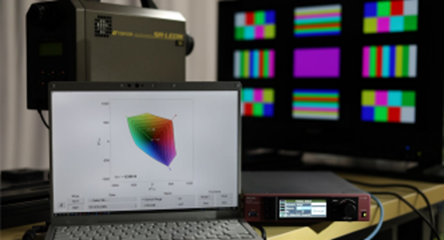
TOKYO—NHK Science & Technology Research Laboratories (STRL) has released some important details about a new way to visualize the range of colors in a 2D diagram using the new international standard “Gamut rings,” which was invented by NHK STRL.
The International Electrotechnical Commission (IEC)1), International Committee for Display Metrology (ICDM)2), and the International Commission on Illumination (CIE)3) adopted the gamut ring framework as an international standard in January, July, and November 2021, respectively. (See Figure 1).
NHK STRL has also developed a system that automatically measures the display color gamut boundary and renders gamut rings (Photo 1).
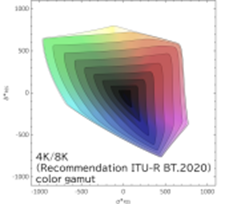

Conventionally, the “color gamut” is represented by the area of a triangle connecting the points of the red, blue, and green primary colors in a chromaticity diagram (Figure 2), NHK STRL explained.
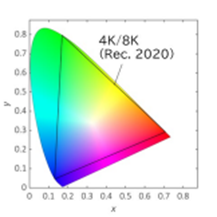
Although this conventional representation is simple, expressing the color gamut in a 3D color space that includes a lightness axis (L*) is suitable for an effective evaluation (Figure 3).
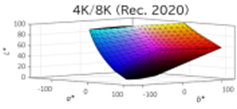
However, a single-angle view in a 3D plot can often be misleading because parts of the gamut are always obscured from the view. It has therefore been a challenge to develop a method to convert the 3D color gamut in a 2D format, NHK STRL noted.
To solve that problem Gamut rings were invented by NHK STRL as a way to accurately represent a 3D color gamut in a 2D diagram.
Get the TV Tech Newsletter
The professional video industry's #1 source for news, trends and product and tech information. Sign up below.
The Gamut Rings are by the following procedure: The gamut solid (Fig. 3) is cut into pieces at regular intervals of lightness (L*). Each piece is then stretched into a slice of unity lightness; the area of the slice corresponds to the volume of the piece. Gamut rings are formed by placing one slice at the lowest lightness level, followed by positioning the other slices around the bottom slice consecutively. The angle from the center represents the hue such as red, green, and blue, NHK STRL explained.
Gamut rings can potentially be applied in the design and evaluation of color reproduction devices, such as displays and printers, and can be used to conduct performance comparisons for both professional and consumer uses, NHK STRL concluded. (Figure 4).
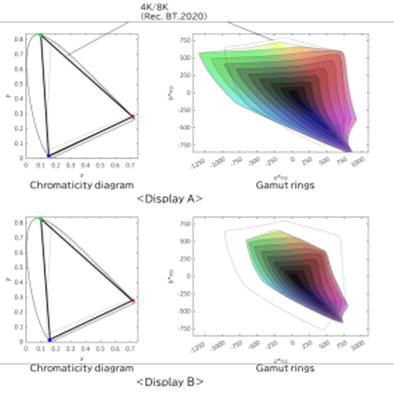
George Winslow is the senior content producer for TV Tech. He has written about the television, media and technology industries for nearly 30 years for such publications as Broadcasting & Cable, Multichannel News and TV Tech. Over the years, he has edited a number of magazines, including Multichannel News International and World Screen, and moderated panels at such major industry events as NAB and MIP TV. He has published two books and dozens of encyclopedia articles on such subjects as the media, New York City history and economics.

